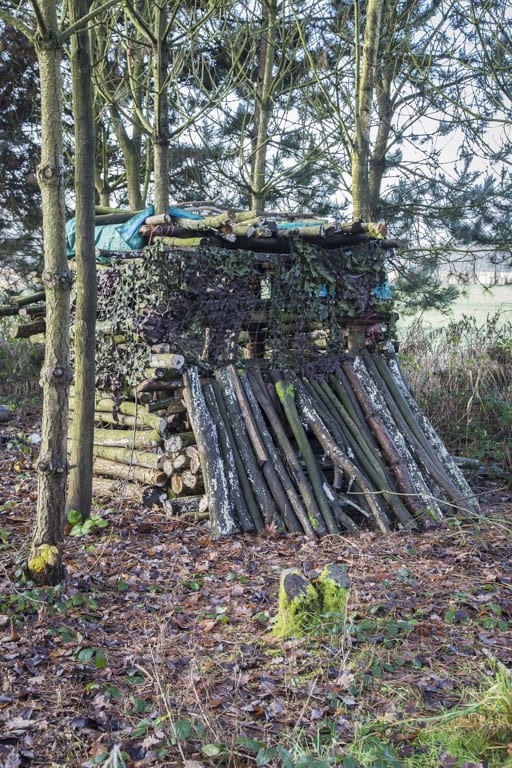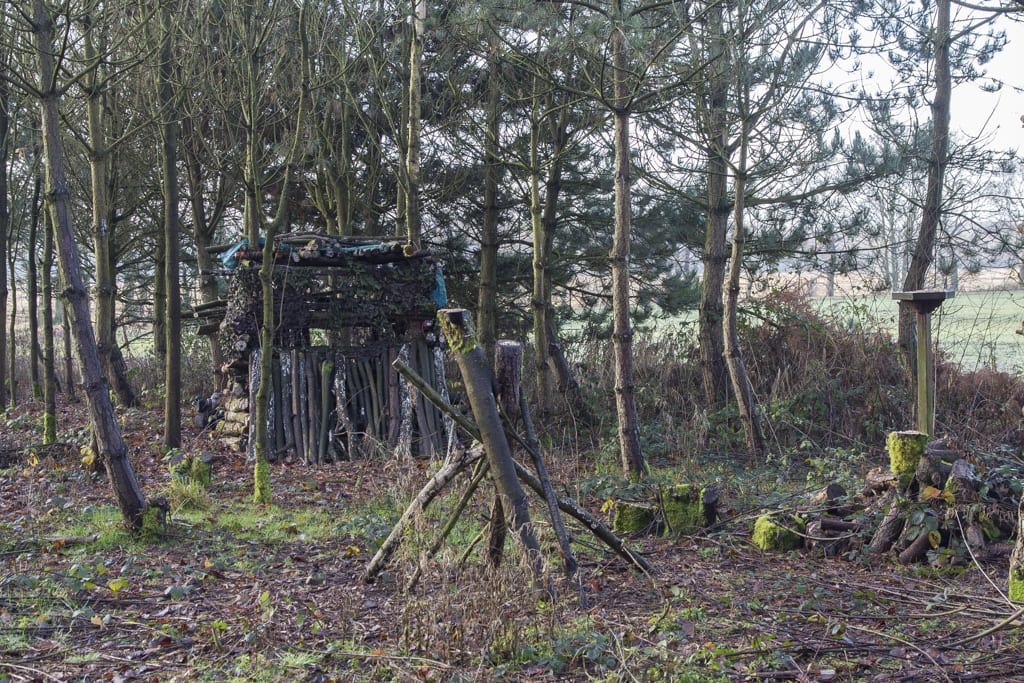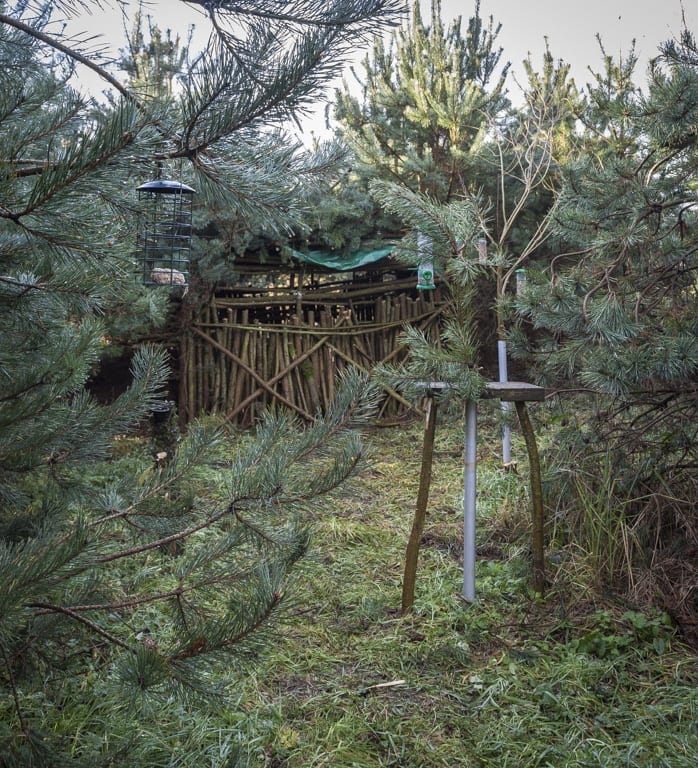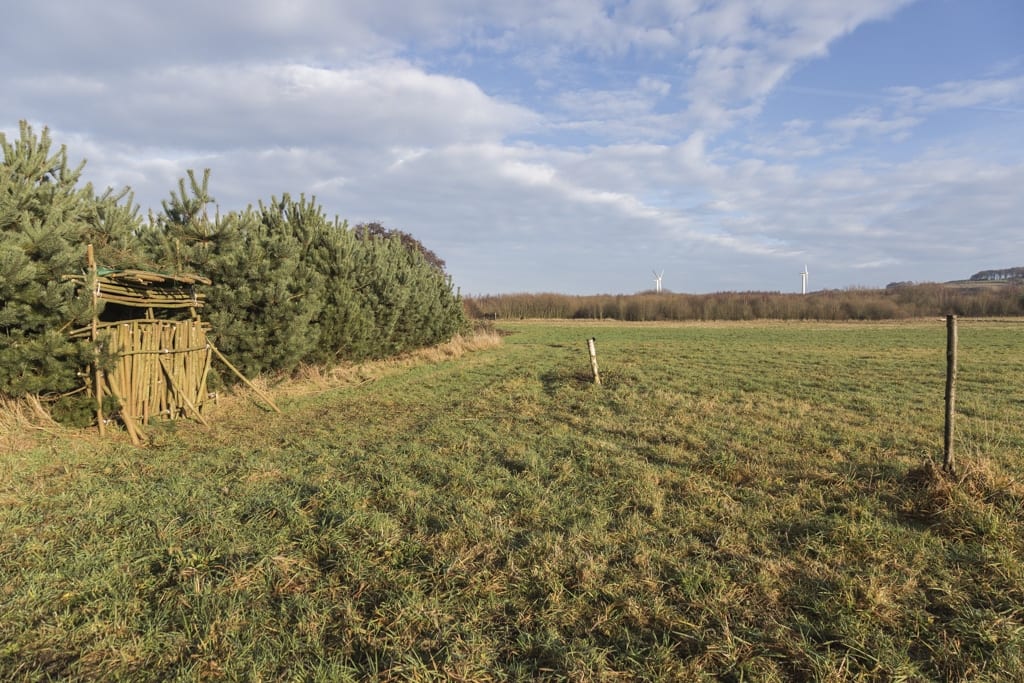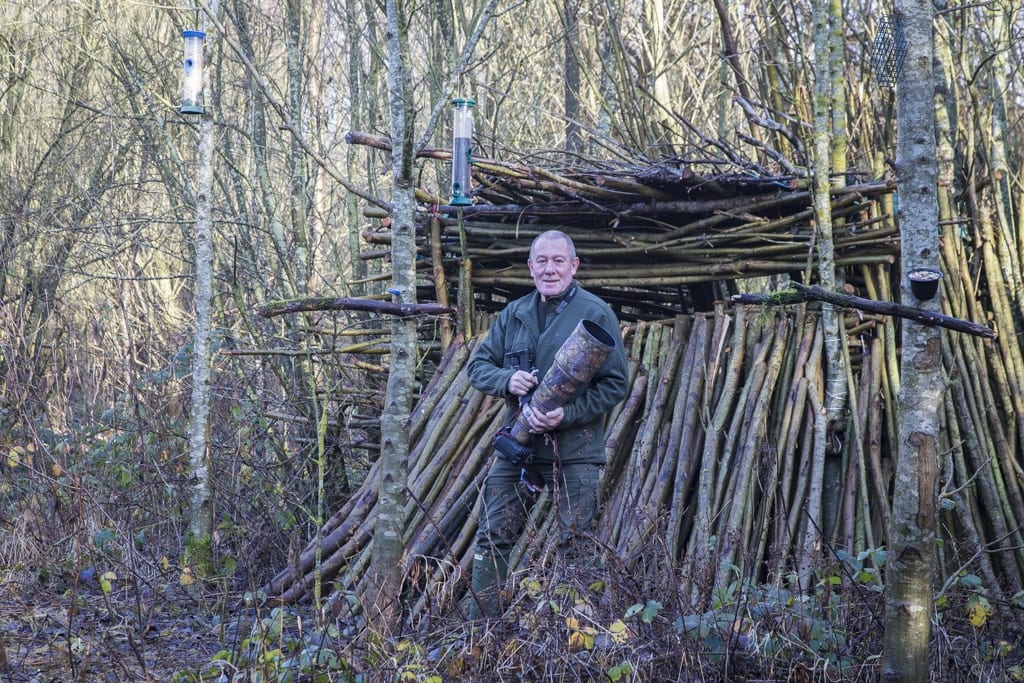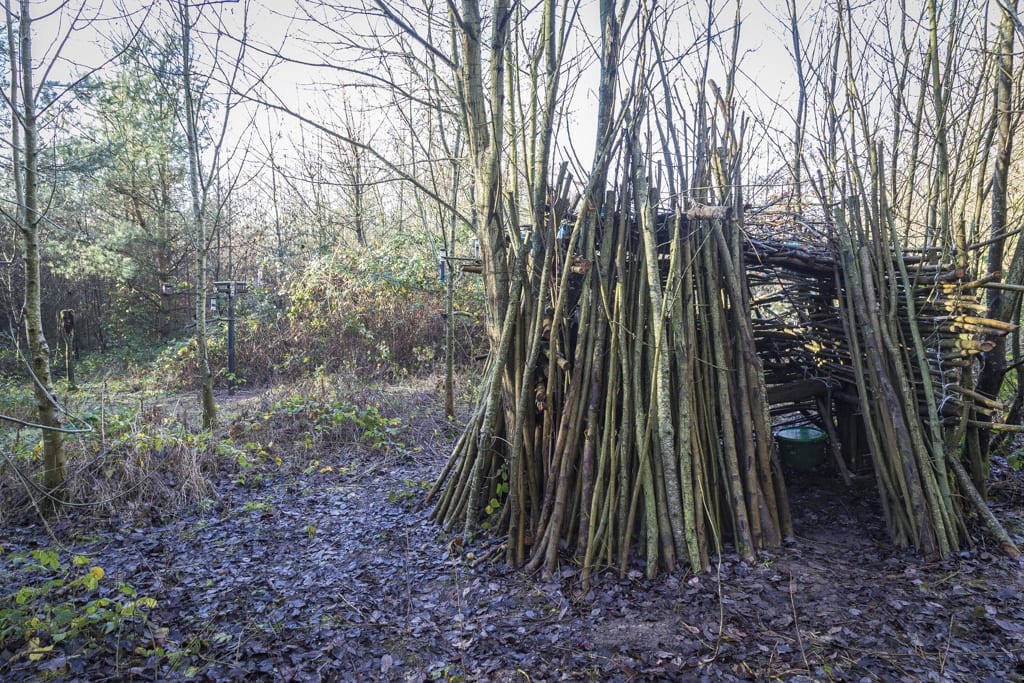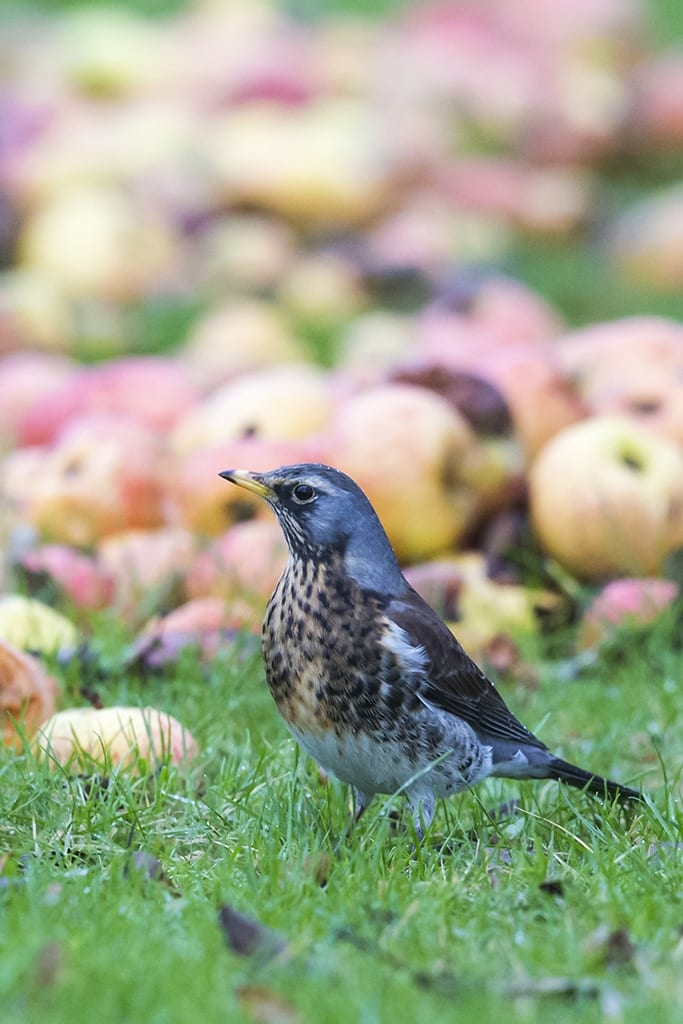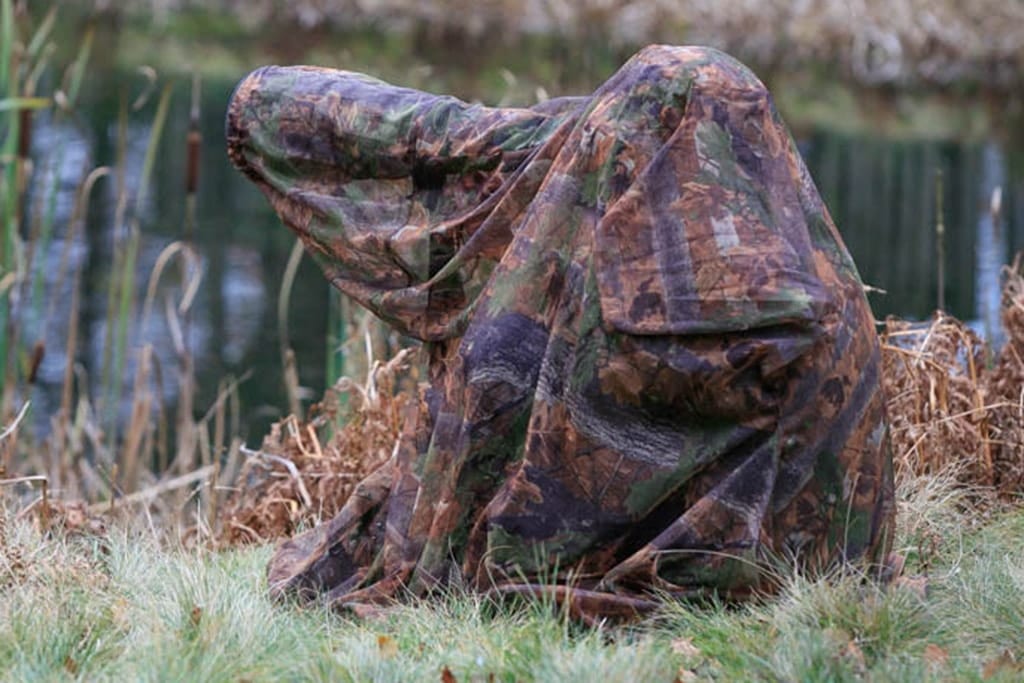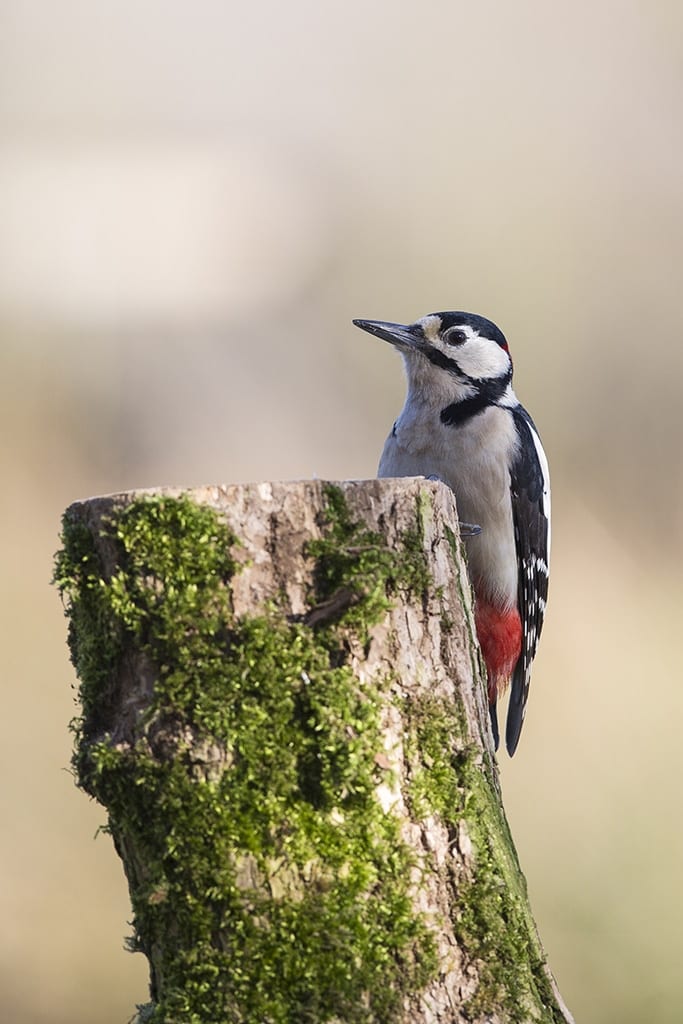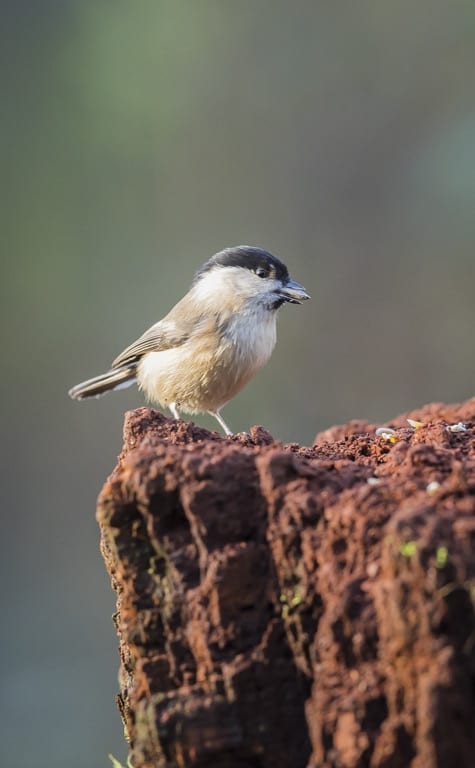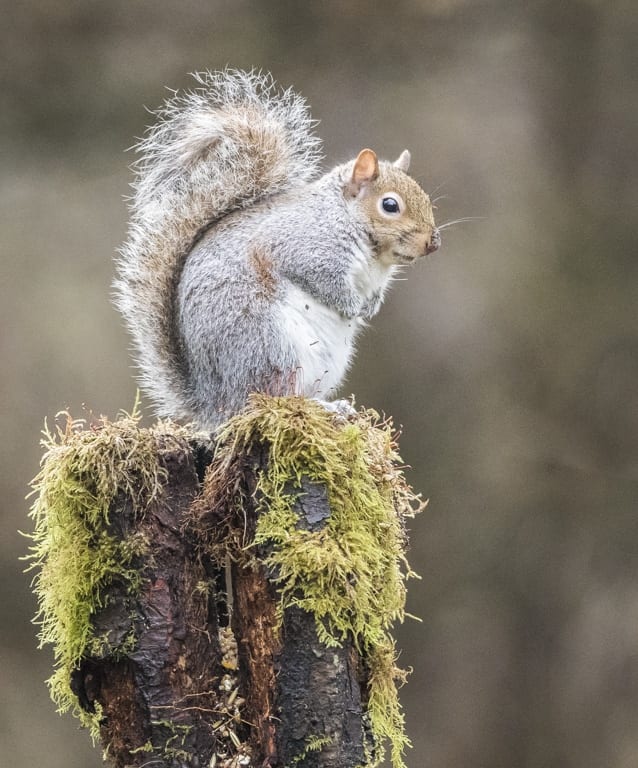Words and photographs by Phil Jones
If you are a regular on the weekly Tutor hosted chats, you will know that I have had an ongoing Barn Owl project for the past 18 months at a farm about 10 miles from where I live in the North West of England.
I had a popup hide fastened to some conifer trees overlooking one of the meadows, which I hoped would me allow to discretely watch the owls hunting at dusk.
Sadly, in early Autumn as a result of one of the unseasonal storms, the hide joined 10,000 Pink-footed geese at 3000 feet on their migration south and was last seen heading down the M6 towards Birmingham.
At that time Alan the farmer who has turned his farm into a conservation area was doing some woodland maintenance, and I asked him if I could use some of the timber that he had cut down to build a hide in that part of the woodland.
He agreed, and I set off to build the hide using only the cut timber and binding twine so as not to damage any trees. I built a hide between a square of four trees.
The farm is made up of various areas of wildflower meadows, deciduous and coniferous woodland and some mixed woodland planted over the last 15 years. This means that the woods are of different densities and attract different species of birds and animals.
Having completed one hide which impressed Alan (he uses it more than me), he asked me if I wanted to build any more hides in the various woodland areas and one overlooking the meadow where my popup hide was originally located.
I jumped at the chance, and before I knew it, trailer loads of cut down timber were being taken to the various locations to help me out. He said my enthusiasm was infectious and did everything he could to assist me, for which I am eternally grateful.
The result is that I now have three more hides completed.
One in conifers:
One overlooking the meadow:
and one in deciduous woodland:
Strategically placed feeders close to perches give great results.
Very rarely do I photograph birds on feeders but food sources are always present to attract the birds in the first place. Keep feeding, and the birds keep coming. Rotting tree stumps with moss growing on them are ideal too.
You never know what will appear—from blue tits to sparrow hawks and if you are lucky, at this time of year, a few fallen apples piled on the ground may attract one of our winter visitors like a Fieldfare.
f/5.6 at ISO 5,000
Don’t be afraid to ask a local landowner for access. Tell him what you want to do, and most of the time they are only too pleased to accommodate you. You will be surprised how relationships develop over a relatively short period.
Show them your work. In fact give them a print.
I now have access to several farms, barns and woodland and the farmers even ring me to tell me what they have seen. Two consider me to be a form of “Neighbourhood Watch” because I’m around at different times of day and evening “keeping an eye on things ” as they say.
If you can’t get access to local land, then you can set yourself up in a fully portable hide in your garden too.
I use a bag hide frequently. It covers a tripod, camera, a chair and me. They are available from many outdoor gear suppliers and are good value.
Animals and birds have become aware of the human form and associate it with danger. Cover yourself to break up that form, and you will be surprised what you can achieve and how close you can get to your subjects without scaring them.
Here are a few shots taken from my hides to show you how perches placed near feeders can get you the natural shots you are looking for.
at ISO 200, spot metered
The birds and animals are hungry now so have a go this winter and try some wildlife photography.
See more of Phil’s work at www.philjonesphotography.co.uk
Interested in wildlife photography? Take an IOP® online photography course today.

